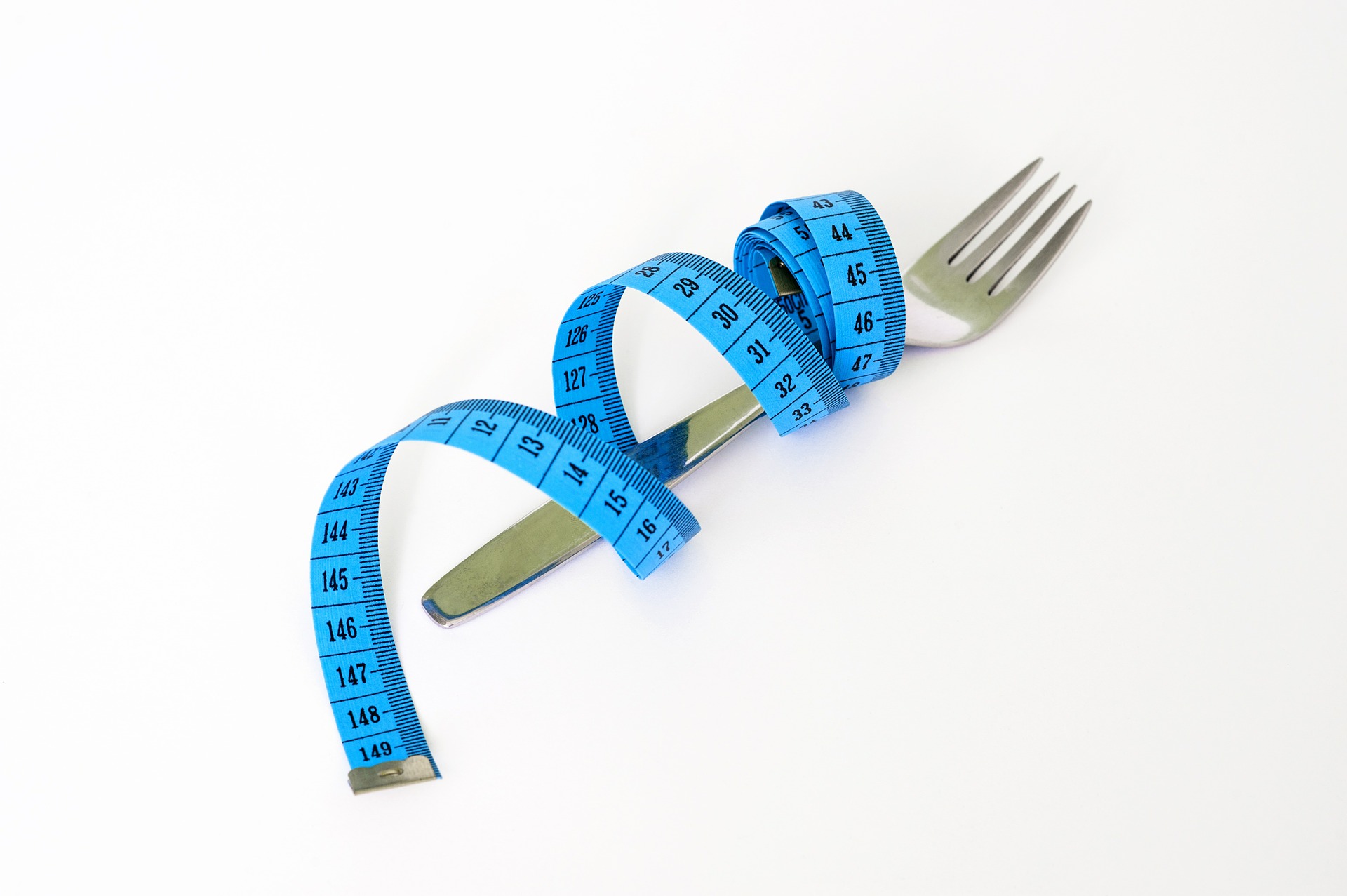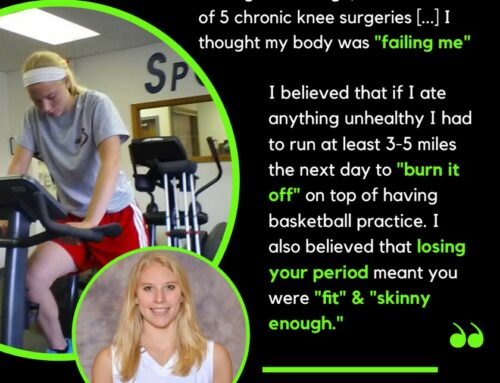Dieting—Not Allowed!
It’s almost bathing suit season. Are you starting to panic because you’ll soon be shedding layers of winter clothing and exposing your body? Eeek!!!
When you have more flab than you want, fretting about excess body fat easily leads to plans to go on a diet, of which there are plenty of choices: Atkins, Paleo, Jenny Craig, the Cabbage Soup Diet, and the Banana Diet. Unfortunately, none of these diets work in the long run. After all, if diets did work, then everyone who has ever been on a diet would be lean. Not the case. We are in the midst of an obesity epidemic.
Not only do fad diets not work, diets commonly backfire and contribute to weight gain in the long run. A study with teens that were followed from middle school into high school indicates the students who were dieting at the time of the initial survey were worse off five years later. Many struggled with disordered eating or had an outright eating disorder and achieved no benefits from their attempts to lose undesired body fat. (1) Futile efforts.
Why eating is preferable to dieting
Overweight teens commonly become adults who continue to struggle with food for the rest of their lives. That’s why, starting at an early age, we need to discourage dieting and instead focus on eating healthfully and appropriately. If you don’t go on a diet, you won’t “blow your diet,” gorge on cookies, and gain weight. Eating normally —enjoying appropriate amounts of wholesome foods when your body needs fuel during the day—leads to an appropriate weight.
Normal eating includes enjoying a good balance of wholesome foods, but not limiting yourself to only “healthy foods.” That is, you don’t have to have a perfect diet to have a good diet. A healthy food plan can include 85% to 90% “quality calories” and 10% to 15% “whatever.” Some days “whatever” is an apple; other days “whatever” is a cookie.
Striving to eat a perfect diet commonly results in deprivation of foods you truly like to eat. You will inevitably end up bingeing on those foods, sooner or later. Think about it this way: If you put a little boy in a roomful of toys and tell him he can play with all the toys except for the green truck, what is the first toy he’ll reach for? Yup, the green truck. Hence, if you like chocolate cake, but tell yourself you shouldn’t eat it, what will you relentlessly hanker for? Yup. Chocolate cake.
How to take power away from food
The way to take power away from a “binge food” is to eat it more often, not stay away from it. For example, if you like chocolate cake, you should eat it every day until you get sick of it. Don’t believe me? Do this experiment: For one week, eat your binge food every day instead of your normal breakfast, lunch, snack, and/or dinner. (You will not die of malnutrition in a week.) Observe what happens. The chances are that after three days of chocolate cake, you’ll hanker for shredded wheat again. And even if you want to continue to eat cake, a recent study indicates you can still lose weight on the Chocolate Cake Diet. In this study, the subjects who enjoyed chocolate cake for breakfast had better dietary compliance and ended up losing more weight than the people who were instructed to eat “diet foods.” (2)
Ideally, you want to learn to enjoy a daily food plan that includes a variety of mostly wholesome foods that are satiating, health promoting, and tasty. You want to eat heartily at breakfast and lunch, to prevent energy lags and cravings for sweets. You want to plan an enjoyable afternoon “second lunch” that helps energize the end of your work-day and curbs your appetite for dinner. Then, at night, you want to eat a little bit less—and lose undesired body fat when you are sleeping. The goal: To wake up ready for breakfast, and perpetuate the cycle of fueling by day, dieting by night.
While these suggestions to eat “normally” are seemingly simple, many dieters find the advice is hard to implement. They are afraid that once they start eating, they won’t stop. This over-compensation is “diet backlash,” strengthened by years of “last chance to eat cake so I’d better eat it all now before the diet starts again tomorrow.” There is a more peaceful way to manage weight.
What is “normal eating”?
The following information offers tips for how to eat appropriately. Please trust that appropriate eating will lead you to an appropriate weight. Eating specialist Ellyn Satter RD, (www.EllynSatter.com), author of Secrets of Feeding a Healthy Family offers the following definition of normal eating.
• Normal eating is going to the table hungry and eating until you are satisfied. It is being able to choose food you like and eat it and truly get enough of it–not just stop eating because you think you should.
• Normal eating is being able to give some thought to your food selection so you get nutritious food, but not being so wary and restrictive that you miss out on enjoyable food.
• Normal eating is giving yourself permission to eat sometimes because you are happy, sad, or bored–or just because it feels good. Normal eating is three meals a day, or four or five–or it can be choosing to munch along the way.
• Normal eating is leaving some cookies on the plate now because you know you can have some again tomorrow–or it is eating more now because they taste so wonderful.
• Normal eating is overeating at times; feeling stuffed and uncomfortable–or it can be under eating at times and wishing you had more. Normal eating trusts your body to make up for your mistakes in eating.
• Normal eating takes up some of your time and attention, but keeps its place as only one important area of your life.
• In short, normal eating is flexible. It varies in response to your hunger, your schedule, your proximity to food and your feelings.
Is it time to start learning how to eat normally?
Information provided by Nancy Clark, MS, RD CSSD (Board Certified Specialist in Sports Dietetics), Chairperson of the Nutrition Committee of the Female Athlete Triad Coalition. Nancy Clark counsels active people at her private practice in Newton, MA (617-795-1875). For more information, read her popular Sports Nutrition Guidebook and food guides for new runners, marathoners, soccer players and cyclists, available via www.nancyclarkrd.com.
The Athlete’s Kitchen
Copyright: Nancy Clark MS RD CSSD March 2012
References
1. D. Neumark-Sztainer D, M. Wall, J Gua, M Story, J Haines, M Eisenberg. Obesity, Disordered Eating, and Eating Disorders in a Longitudinal Study of Adolescents: How Do Dieters Fare 5 Years Later? J Amer Diet Assoc 2006 (4):559-568.
2. http://www.sciencedaily.com/
Daniela Jakubowicz, Oren Froy, Julio Wainstein, Mona Boaz. Meal timing and composition influence ghrelin levels, appetite scores and weight loss maintenance in overweight and obese adults. Steroids, 2011; DOI: 10.1016/j.steroids.2011.12.006






